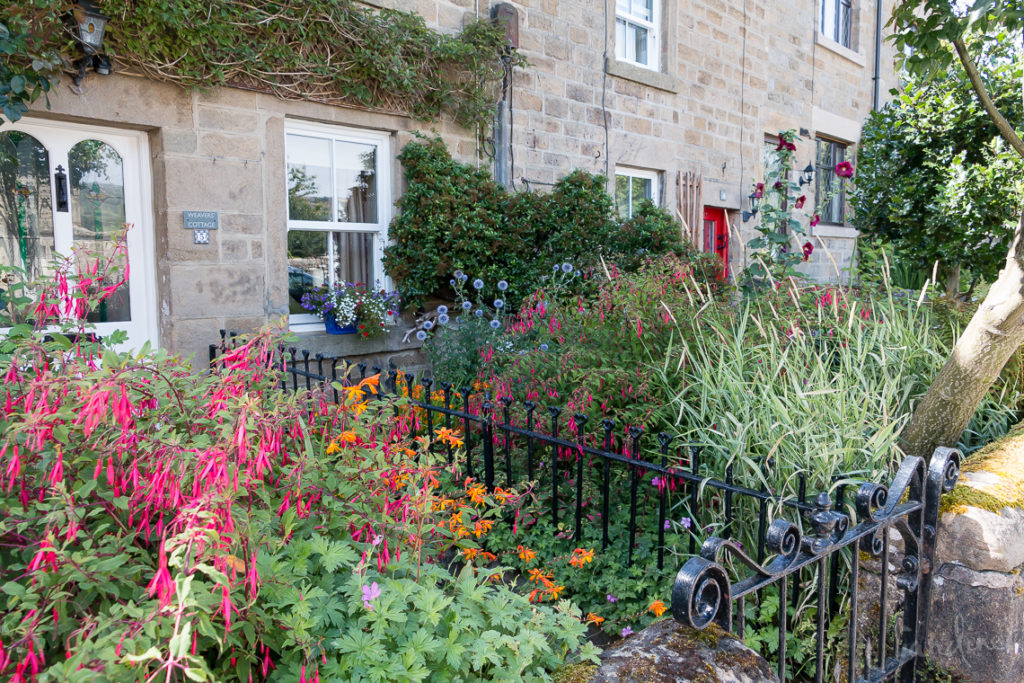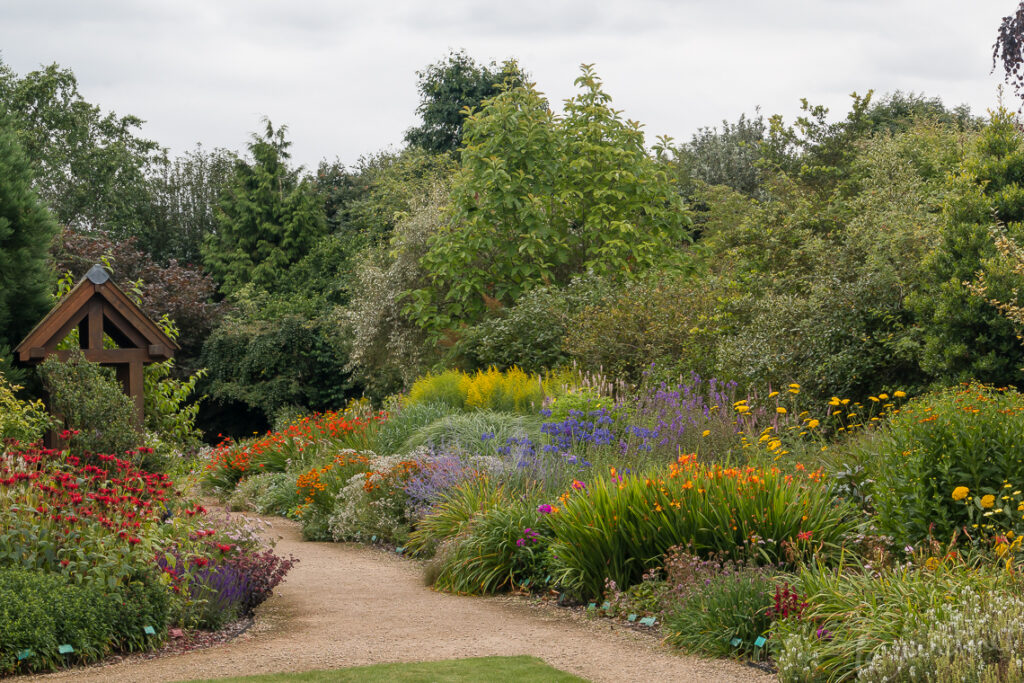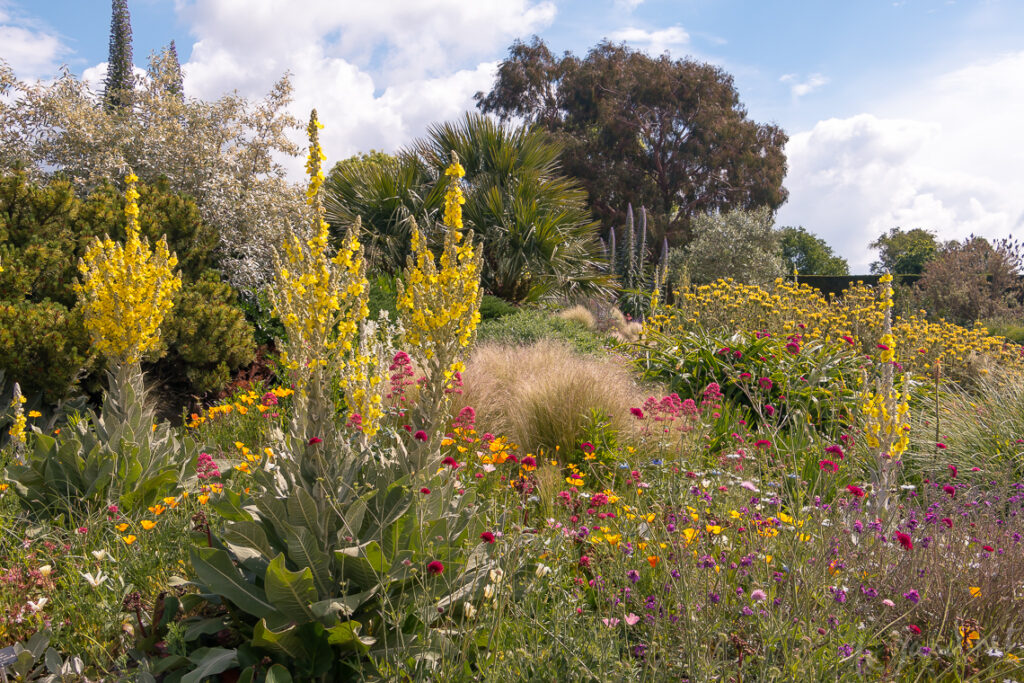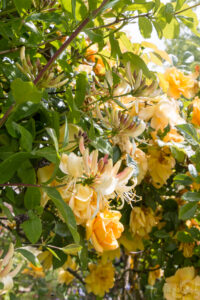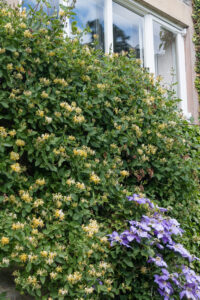The Layered Garden: Lessons from England

English gardens are known for their unapologetic "abundant" look, where flowers, vegetables and/or shrubs mingle easily like the very best of friends. This is achieved by "layering" a range of plants with different heights together and is a technique that can be applied from the tiniest garden to the largest estate regardless of aesthetic or level of maintenance that the gardener is willing to do.
Horizontal Layers
In a previous blog post I used this postage stamp garden in the Yorkshire Dales to demonstrate this technique. With little room for a tree to serve as the tallest layer, the house walls themselves were used to support climbers – both a trellised clematis and an evergreen pyracantha. Stair-stepping down in height are shrubs such as the hardy fuchsia and perennial globe thistle (Echinops spp.), then shorter perennials such as crocosmia and a pink hardy geranium. The take home lesson here is that a small footprint doesn't mean you can only use short plants.
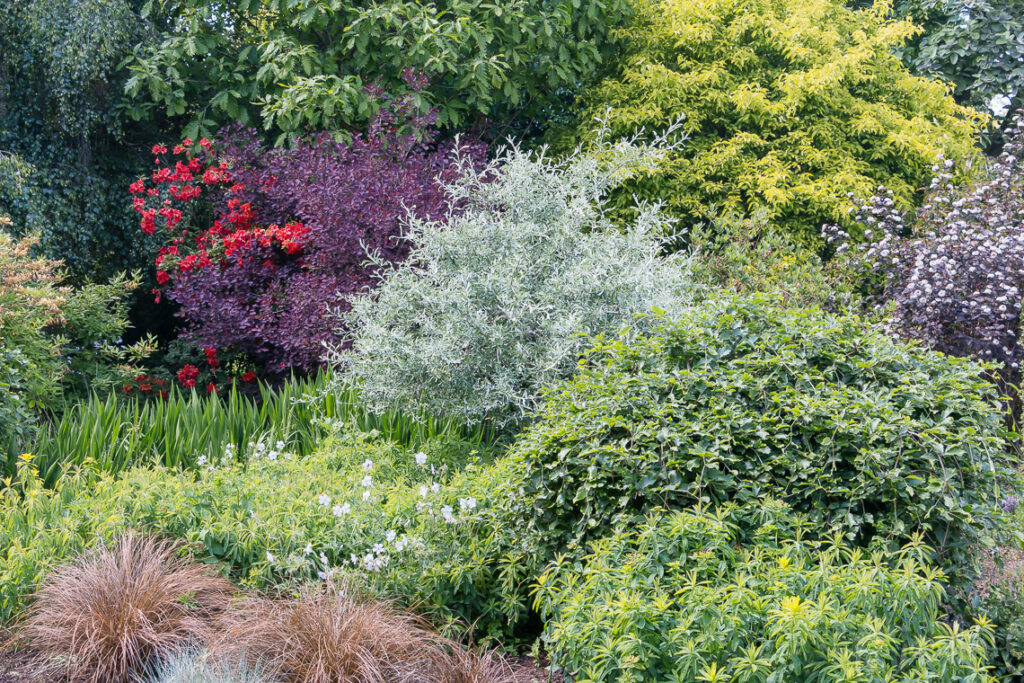
Foggy Bottom, the private garden of Adrian Bloom offers a wealth of planting combinations to explore. Here, layers of colorful shrubs create a tightly woven tapestry of textures.
Noted plantsman Adrian Bloom of Bressingham Gardens, East Anglia achieves a layered garden by focusing on a variety of colorful shrubs. With a backdrop of a tall golden conifer and green-leaved deciduous trees he has planted purple smoke bush (Cotinus spp.), a silver weeping pear (Pyrus salicifolia 'Pendula') and a dark variety of ninebark (Physocarpus spp.)- all approximately 7 feet in height, before layering in shorter shrubs and finally a selection of bronze and blue grasses. The result is lush and relatively easy care since little has to be cut back in fall or spring – maintenance is primarily seasonal pruning and raking.
Perhaps you prefer a more floriferous garden? Breezy Knees Garden shown above still has the tallest layer formed by conifers and deciduous trees but these are fronted by an 8-foot or so tier of spring blooming shrubs (think lilac, mock orange etc) before the colorful tapestry of perennials weaves together to form the lowest layers. This tiered border will be higher maintenance than the previous one shown, since unlike shrubs all these perennials will need to be cut back before spring.
The great lesson I have learned from visiting so many English gardens is that you can achieve layering no matter your preferred style or plant palette. Here at Beth Chatto's gravel garden in Essex the greatest height is provided by palms and conifers and the midpoint by yellow blooming verbascum while an abundance of grasses and a confetti-like planting of self-sowing perennials and annuals covers the bare ground.
Vertical Layers
"If there's room for one plant – use two!"
This applies equally to container gardening, landscape borders and vertical gardening – especially in England. I came across many examples of establishing one climber against a wall or fence then using that to support a second climber.
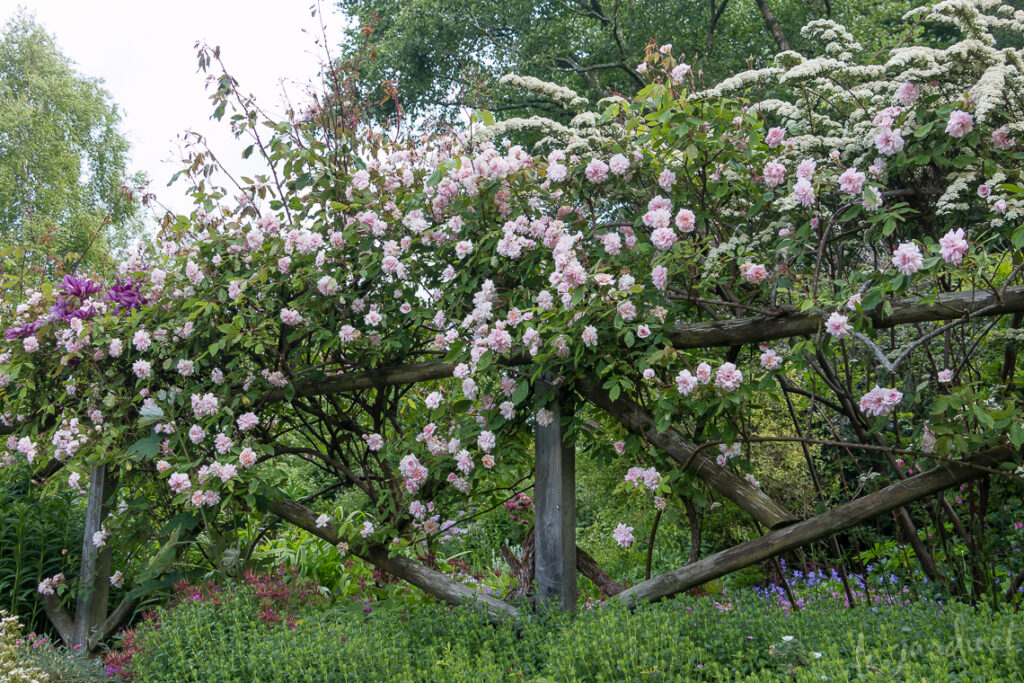
A private garden tucked away in the Yorkshire Dales offers a glimpse into the quintessential cottage garden complete with climbing roses and clematis scrambling casually over a weathered fence
Clematis and roses are a classic combination in English gardens. The rose is established first then the clematis planted at its feet. You can get really creative with these pairings by selecting colors that contrast or harmonize and bloom times that are in unison or sequential. I can highly recommend a book by John Howell's, The Rose and the Clematis if you'd like to learn more about this.

Westerland rose and Clematis jackmanii 'Superba' make a memorable pairing
Honeysuckle can also be used as the foundation climber to support clematis. Selecting a clematis that is hard pruned in spring ensures it will never be engulfed by the vigorous honeysuckle vine.
- Honeysuckle and rose in shades of yellow offer a beautiful splash of sunshine to the garden
- A yellow honeysuckle supporting a lavender large-flowered clematis offers layers of color for an extended bloom time
Evergreens can also be used as the base layer for other climbers.
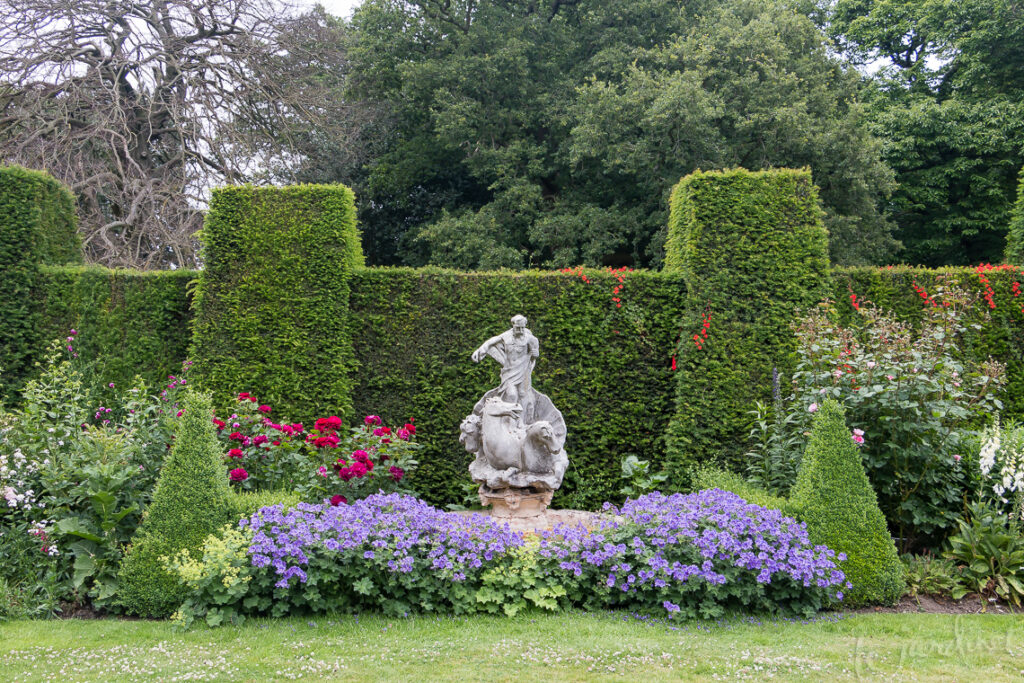
The gardens at Renishaw Hall are one of Derbyshire's best kept secrets! I loved the juxtaposition of this formal clipped yew hedge fronted by a froth of perennials – but look at that ribbon of scarlet flame nasturtium running through the hedge!
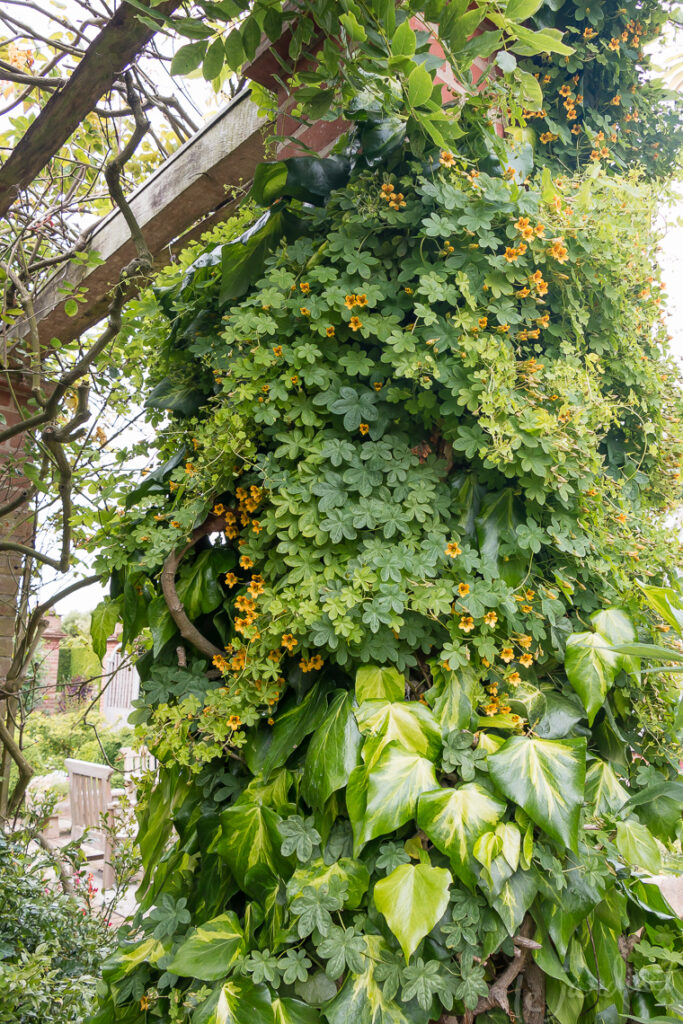
A yellow flowering species of hardy nasturtium is the perfect color echo to this ornamental ivy, growing together on a brick pillar at East Ruston Old Vicarage Garden in East Anglia
The yew hedge above is the perfect foil for flame nasturtium, a hardy climbing nasturtium. There are also some yellow blooming species of climbing nasturtium.
I hope that has given you a few ideas to try in your own garden.
If you'd like to explore more gardens with me in both England and South Africa, I do have just a few spaces left on each of my tours this year. In fact, we will be visiting several of the gardens shown here including Beth Chatto's garden, East Ruston, and Bressingham Gardens)- plus a whole lot more.
You'll find all the details on my travel page.
Keep in touch and share your ideas from garden travels with me too – I love to see gardens through your eyes.
Subscribe to Receive Blog Posts
Gardening inspiration delivered right to your inbox from Le Jardinet
This post contains some affiliate links. Purchases made though these links will earn me a few pennies towards my next plant – thank you
